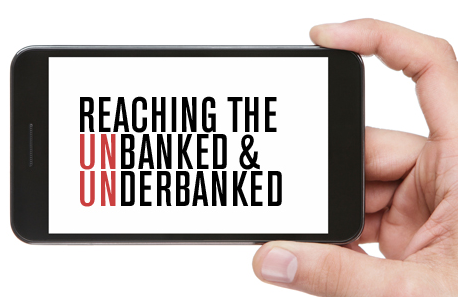Most people have a very specific picture in mind when they think of Millennials. It often includes an entitled, self-indulgent hipster who’s overly fond of avocado on toast. Surely, there are some Millennials who fit this mould, right down to the geometric wolf tattoo on their forearms, but this imprecise sketch barely captures the multitudes of this generation. There’s probably a lot you didn’t know about the average Millennial — like, for instance, that 68 percent of them would rather visit the dentist than listen to what the bank has to share. As more studies emerge, it seems like Millennials’ weakness for brunch is only outmatched by their suspicion of traditional banking institutions — making them the generation most likely to go underbanked in the US.

But first, what does it mean to beunbanked?
The unbanked represent a portion of the population who has no checking or savings account. No traditional bank represents them in any way, leaving them reliant on cash transactions to pay for necessities like bills and repairs. In some cases, traditional financial institutions refuse the unbanked services because these people don’t meet their criteria. For example, individuals with very bad credit or those who can’t keep a minimum balance won’t be able to open an account with these organizations.
By contrast, many Millennials purposefully choose to be unbanked. Suspicious of traditional institutions, those that choose to go unbanked prefer online apps and fintech startups for their financial needs. While household financial brands like Wells Fargo and Bank of America may instill a sense of betrayal, new and previously unknown consumer-finance startups have yet to let them down in the same way. Millennials see an opportunity in these emerging financial institutions.
How do they differ from the underbanked?
The underbanked have a checking or savings account with one of the traditional banks in the country, but that’s all they have. They don’t take advantage of the other financial products on offer, like investments, lines of credit, or credit cards. In fact, 63 percent of Millennials don’t have a credit card at all.
According to First Data, 68 percent of Millennials consider their banking relationship to be transactional rather than relationship-driven. Without any loyalty to these brands, roughly a third of them are willing to transfer to another bank within a moment’s notice. The same study shows 94 percent of consumers under 35 years old use online banking, citing it as the most important feature of their banking experience.
Like the unbanked, they too rely on fintech startups and alternative financial companies like Chime and MoneyKey for help finding cash flow solutions, investment opportunities, and quick installment loans. You can find a more thorough outline of online installment loans by visiting Moneykey.com/installment-loans-online.php. If you want to learn about online banking and investment options, check out Chime’s FAQ page.As fintech continues to disrupt typical financial services, more than just the unbanked will use them; however, mobile trends show innovative banking solutions are the most used by the unbanked and underbanked.
While some of these people are locked out of the typical financial transaction because of their unenviable financial situation, a growing number of Millennials are purposefully choosing to lock traditional banks out of their personal finances. They want an easy and convenient mobile experience. But more importantly, they want to be able to control their finances and protect it from Wall Street.